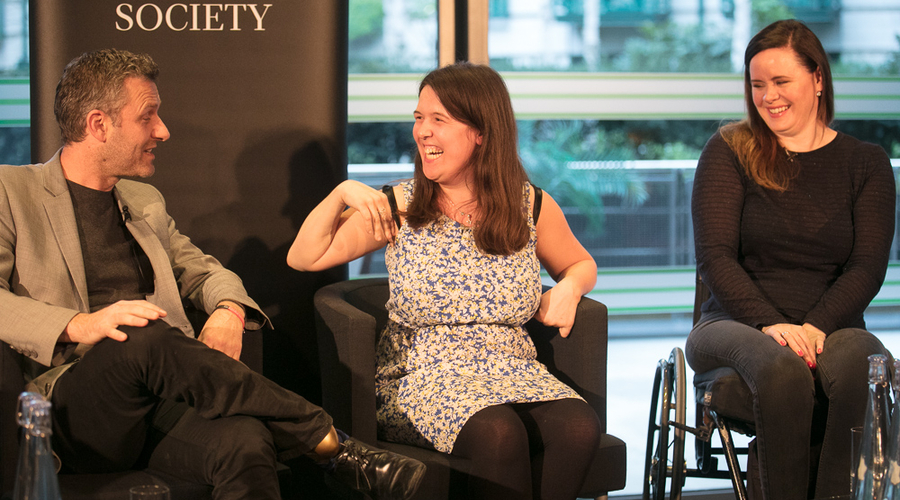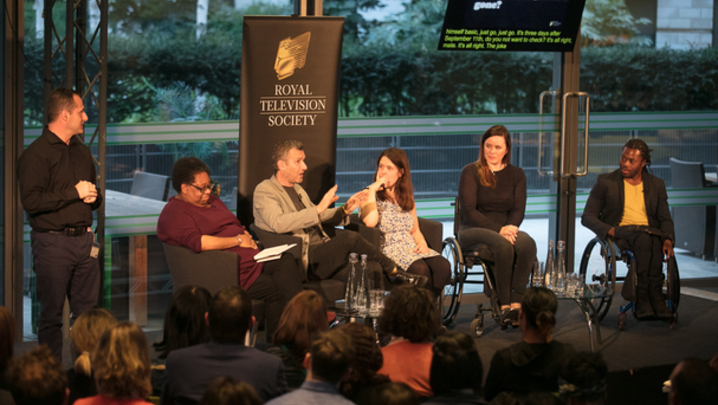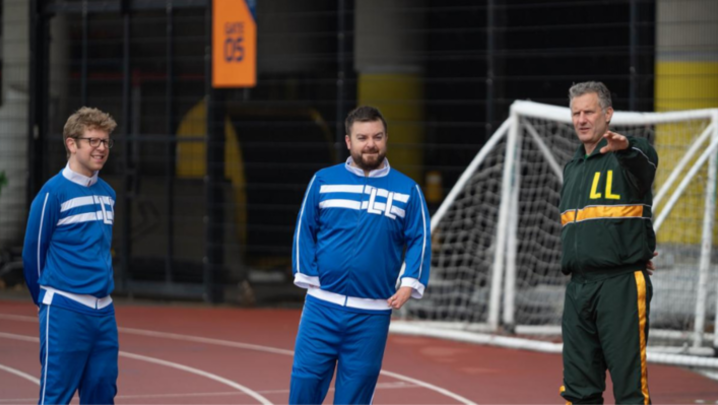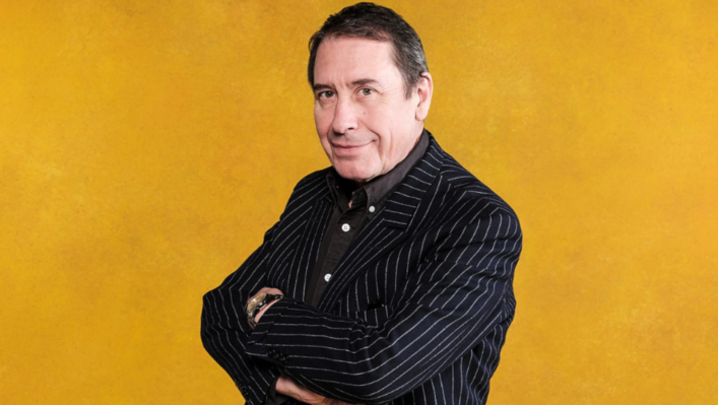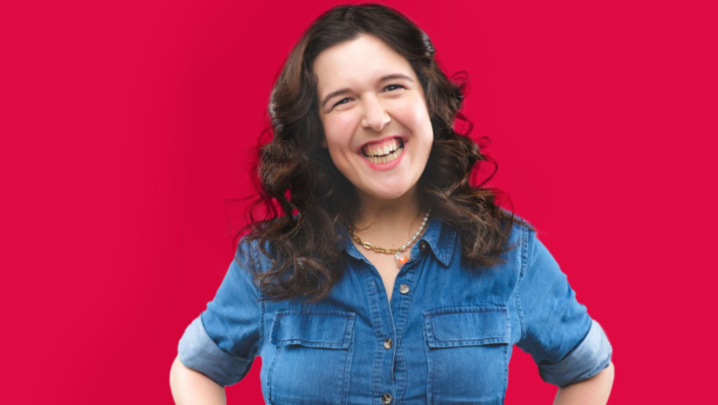Progress is being made in how British TV portrays and employs disabled people, but a huge amount of work at boosting opportunities on both sides of the camera is still needed.
That was the sobering conclusion from an RTS early evening event, Where Have All the Disabled People Gone?
Paradoxically the discussion was full of laughter and sly wit, not least from chair, the journalist and presenter Ade Adepitan.
A panel of disabled men and women who work in TV and media told the audience of their experiences trying to make a living in TV.
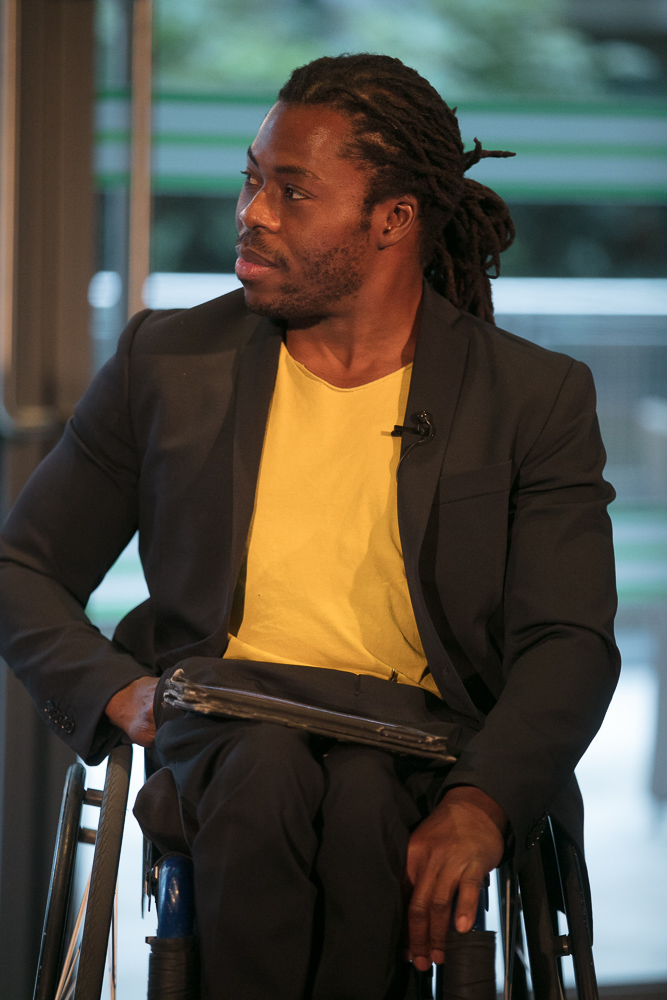
(Credit: Paul Hampartsoumian)
Adepitan said recently UK soaps Coronation Street, EastEnders, Emmerdale and Hollyoaks have all featured disabled actors.
“There’s even been a step change after Channel 4’s coverage of the London and Rio Paralympics,” noted Adepitan, a medal winner at the 2004 Paralympics who has hosted shows for CBBC and appeared in EastEnders.
He was picked to be one of the main presenters of the London games for Channel 4 in 2012 and the Rio Paralympics last year.
Adepitan highlighted the success of Channel 4’s satirical panel show, The Last Leg - launched originally to accompany the 2012 Paralympics - as another landmark in helping to improve the visibility of disabled people on TV.
“But is it enough or have we just scratched the surface?” he asked.
It’s estimated that around 20% of the UK population is disabled or suffers from a long-term health condition, he said.
Disabled people find it hard to get a job. Two million of the disabled in Britain are unemployed. “Potentially, that’s a lot of untapped talent,” said Adepitan.
One of the themes to emerge from the evening was not only the lack of disabled people working in TV, especially in drama and comedy, but rampant stereotyping of those that do manage to land a gig on TV.
The point was made with humour by Rosie Jones, researcher and comedian, who has cerebral palsy.
She recalled that the first disabled character she saw on TV was a school girl in BBC TV’s pioneering drama, Grange Hill. Rachel, played by Francesca Martinez, had cerebral palsy.
While Jones was thrilled to see someone similar to her on the small screen, she hated the fact that one of the storylines involved Rachel being bullied.
“I had a great time at school and I bullied people,” she said to ripples of laughter from the audience.
Jones added: “I have never felt disabled. So it was interesting to see someone on TV [but] it made me quite angry.
“Why is she the only person I have to be compared to? It just made me feel like I wanted more people [like me] out there.
“Why wasn’t there an ultra-cool, ultra-funny person exactly like me?”
“Why are disabled people on TV always portrayed as being nice all the time?” asked Adam Hills, presenter of The Last Leg.
“Why aren’t there any [disabled] bastards on TV?” Jones added.

and Ade Adepitan (l-r)
(Credit: Paul Hampartsoumian)
As the laughter from the audience subsided, Hills said one of his early role models was athlete Oscar Pistorius.
It should be stressed that when he first saw Pistorius, the runner was not a convicted murderer.
Another early role model was another Paralympian, Johnny Peacock. Like Hills, he had a single leg, below-the-knee amputation.
Until then, the only people he’d seen with the condition were “old blokes.”
“I was proud to see a positive representation of it…to see someone sprinting as fast as Johnny was,” explained Hills.
In contrast fellow panellist Deborah Williams, CEO, Creative Diversity Network, said she had no TV role models to inspire her.
“I’ve never seen a black, disabled woman, slightly overweight, with no left hand on television,” she told the RTS.
“It makes me feel sick to the pit of my stomach,” said Williams, who performs as a comedian.
In the mid-1980s the only people she could begin to identify with on TV were French and Saunders as they looked completely different to anyone else on the box.
Had Williams been able to see representations of herself on TV it would have allowed her to feel “comfortable” in her own skin.
“Because I don’t see myself on TV, I am not comfortable with myself, I am not happy with myself. Had I been able to see people like me on TV it would have boosted my confidence,” said Williams.
She stressed that one of TV’s purposes was to “remind us that we exist in many shapes.”
Shannon Murray, actress, writer and broadcaster, emphasised that disabled people need to be regarded as part of everyday society by their able-bodied peers.
“We can like clothes and fashion and take pride in our appearances,” she said. “I wanted to snog boys [as a teenager] and go to clubs.”
Paralysed from the waist down since the age of 14 following an accident, Murray has forged a career as a model, an actor and a lawyer.
This was despite encountering obstacles such as the lack of disabled access to buildings where casting auditions are held.
Williams sounded pessimistic regarding the opportunities for disabled actors in TV drama and comedy.
She said that in other non-scripted areas British TV was doing more to embrace disabled representation.
All the panellists agreed that real and lasting change will only come when some of TV’s decision makers are hired from the ranks of the disabled.
Ultimately, broadcasters and film studios are losing out financially by continuing to marginalise the disabled, argued Hills.
Once they wake up to the impact that improved depictions of the disabled can have on the company’s bottom line, a tipping point will occur.
Where Have All The Disabled People Gone? was an RTS early evening event held at Channel 4, Horseferry Road, London SW1 on April 10. The producers were Dan Brooke and Jonathan Simon
A full report will be published in the May edition of Television

